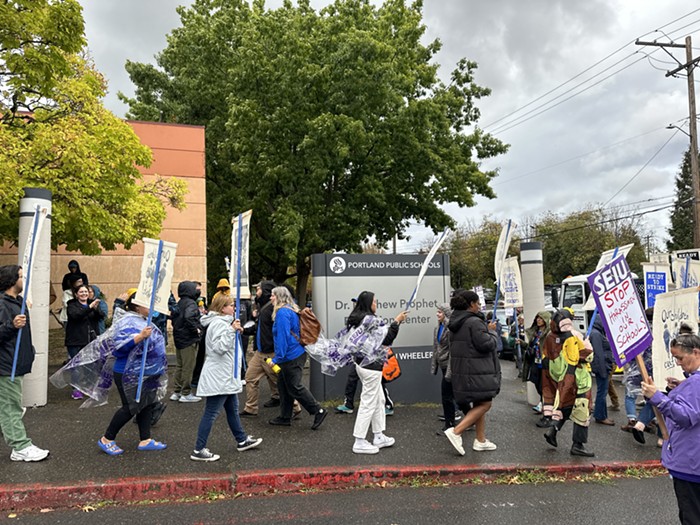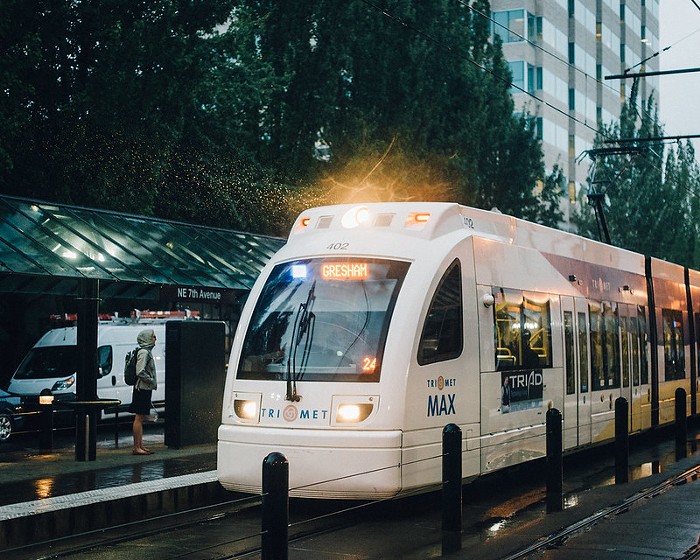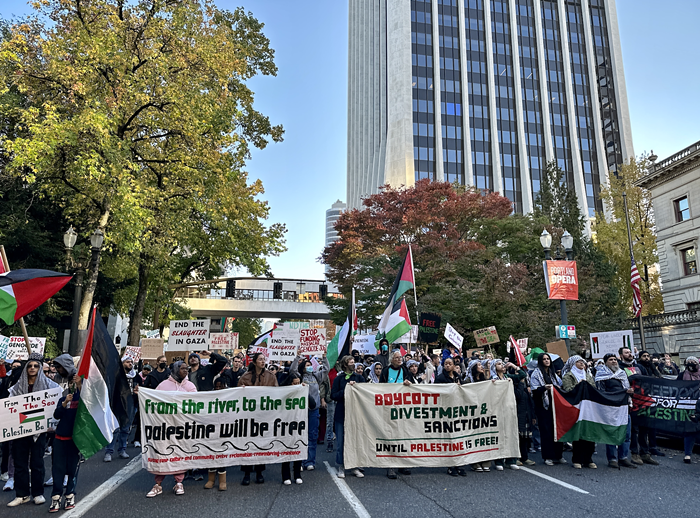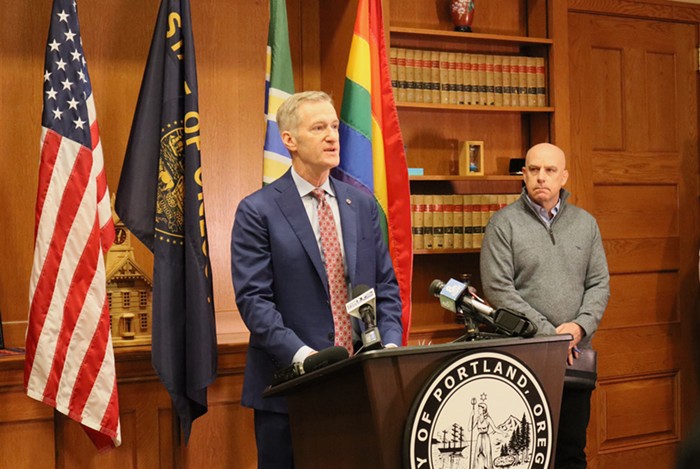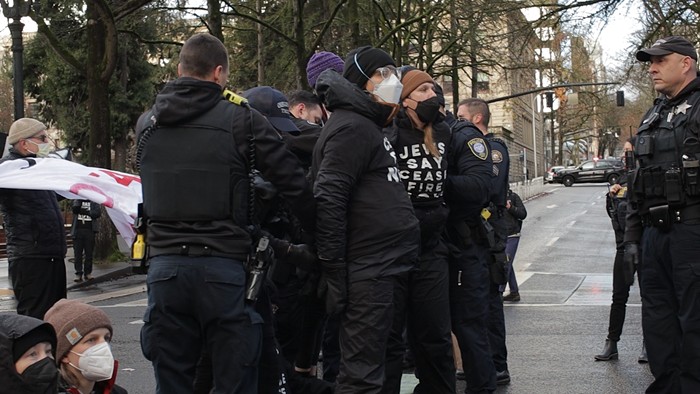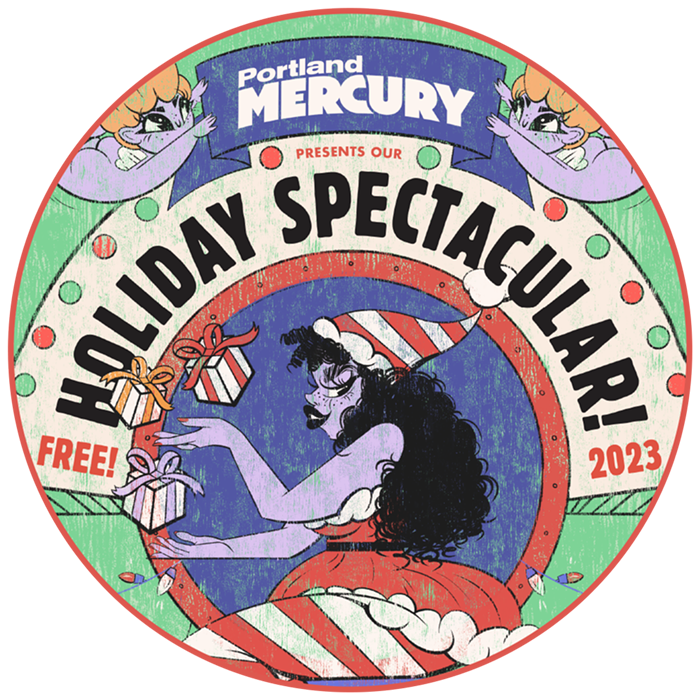AFTER MORE THAN 15 years, Portland's finally about to receive a detailed chore list for cleaning its river.
At some point in the next few weeks, the US Environmental Protection Agency (EPA) will release a proposed plan for how the city and potentially more than 150 other entities must attack a century's worth of dangerous pollution sitting in sediment at the bottom of the Portland Harbor.
"That, after 15 years, is pretty awesome," is how Kim Cox of the Portland Bureau of Environmental Services puts the anticipation around the plan. It is a very big deal.
The 10-mile federally listed "Superfund" site—stretching roughly from the Fremont Bridge to the Columbia River—encompasses nearly 2,200 acres. Because of decades of industrial activity along the river, a lot of those acres are infected with dozens of nasty acronyms like DDT and PCB that find their way into local fish, birds, river mammals—and potentially humans (mostly via eating fish), where they can pose a cancer risk.
So there are a lot of people anxiously waiting to see what sort of cleanup will be mandated. And, obviously, there are a lot of people eyeing the price tag.
But it turns out you don't have to look too far to get a sense of what the EPA has in mind. Back in November, the agency unveiled its "preferred alternative" for sprucing up the Willamette, in a presentation to a national board tasked with reviewing such cleanup plans.
That option will probably be tweaked before it reappears in April, but it's a good bet whatever the EPA proposes won't be too far off. And it's of vital interest to Portlanders not just because our local fish are splashing health hazards.
The city—which dumped sewage and stormwater into the river for decades—will almost certainly be asked to pay for a segment of the cleanup. That means you'll be asked to pay for a segment of the cleanup (you've already paid millions to study the river bottom).
So what can you expect? Here are some basics of the plan the EPA has signaled it likes:
• It will be expensive
The plan will likely cost more than anyone might have guessed when the Portland Harbor was first designated a federal Superfund site back in 2000. At the time, the full extent of the contamination wasn't known. Officials figured it ran for around six miles and that the most extensive cleanup could top out at a little more than $1 billion.
A lot has changed. Today, extensive sediment sampling [pdf] has revealed the Superfund site is miles longer, and the estimates for cleanup seem to shoot up by hundreds of millions every year. The City of Portland now says cleanup could cost between $800 million and $2.5 billion.
The option the EPA likes would nearly split the difference between those two figures. It's estimated that it will be a $1.4 billion operation that would take seven years to construct.
Who foots that bill will become a heated topic of discussion once the feds finalize a cleanup plan later this year. More than 150 potentially responsible parties the EPA has identified will haggle over how cleanup costs should be split up.
That means it's unclear how much of the burden will fall to the city, or where the funds will come from to pay for it. One possibility: increases to Portlanders' sewer bills.
"It hasn't been decided," Cox says. "We don't know how much, if at all, we have liability."
• It won't actually do much to most of the harbor
The plan the EPA likes would leave a whopping 86 percent of the Superfund site—1,882 acres—completely untouched. That's a strategy you might hear described as "monitored natural recovery"—a fancy way of saying that officials are planning on letting new sediment gradually cover the more mildly contaminated parts of river muck on its own.
Not surprisingly, the ratio is unacceptable to the environmental groups who've been obsessively watching the cleanup process.
"We want an aggressive cleanup that gets us toward levels that are considered safe for people and wildlife within a matter of years, rather than a matter of generations," says Bob Sallinger, conservation director for the Audubon Society of Portland. "Nobody expects every square inch of the river is going to be cleaned up, but the option they're considering is very weak."
Sallinger and Travis Williams, executive director of Willamette Riverkeeper, favor other options the EPA has in its toolkit—chiefly dredging, which involves digging up toxic sediment and either treating or disposing of it. The EPA's preferred plan would dredge only 167 acres of river bottom, much of it just north of the St. Johns Bridge.
Another option, capping, involves topping toxic muck with sand, gravel, or other materials to reduce contact with contaminants. The EPA's preferred plan would cap 83 acres of river bottom.
Once the proposed cleanup plan is released, entities will begin debating how best to line up these options. Sallinger and Williams will certainly argue for far more extensive cleanup—including, potentially, dredging up to 1,400 acres. Don't be surprised if the Lower Willamette Group, a coalition of 14 polluters including the City and Port of Portland, argues that more dredging and capping will produce negligible benefits at a sharply increased price.
"There's certainly a point where you can throw a lot more money at the project, but you won't get appreciable reductions in actual risk," says the group's spokesperson, Barbara Smith. "It's a 2,000-acre site, and not every acre is contaminated like the next."
• It might involve a toxic waste dump on the riverbank
At least initially. For years, the EPA and Lower Willamette Group have had their eyes on sites that might be suitable spots to dump contaminated muck and isolate it from the wider river.
The good thing about such a plan: It'd probably be less expensive than shipping the waste to a disposal facility, and there are several areas of the river that might work—like a polluted slip in the Port's Terminal 4, a little less than two miles north of the St. Johns Bridge.
The bad news: Neighbors hate the idea of putting a waste repository along the riverbank, even if it would be covered with an enormous amount of clean dirt. There are also concerns about how safe the facility would be in an earthquake.
Nevertheless, the EPA has signaled it will suggest a waste site on the river, if only to stake a position it can later walk back as a bargaining chip.
"They're going to go with Terminal 4," Williams says.
This brings us to a final important point.
• This could all change
That's why it's important to pay attention to this hugely complex issue. If you don't like what the EPA unveils—because it's too kind to industrial polluters, or potentially too costly to taxpayers—Portlanders are able to make their voices heard.
For two months following the release of the cleanup proposal, there will be information sessions and the opportunity to lodge your opinion. You can bet the EPA's list of potentially responsible parties—outfits like Siltronic Corporation, ExxonMobil, and Kinder Morgan—will be offering theirs.
Williams of Willamette Riverkeeper is optimistic about what this input process can achieve. He thinks the EPA would like to press for more cleanup. That's just hard to do when cost-conscious industrial polluters are the ones making the most noise.
"They are hoping," Williams says, "that we can push them to a better option."
